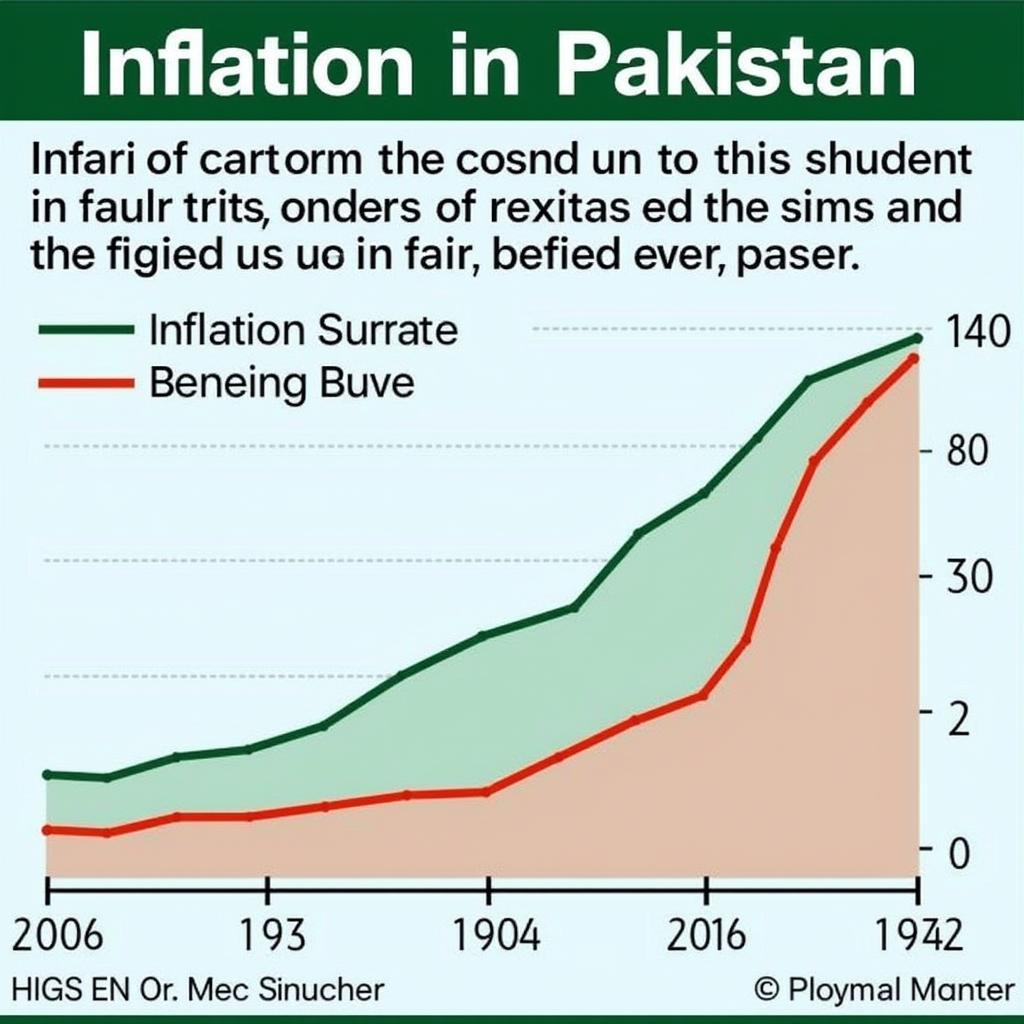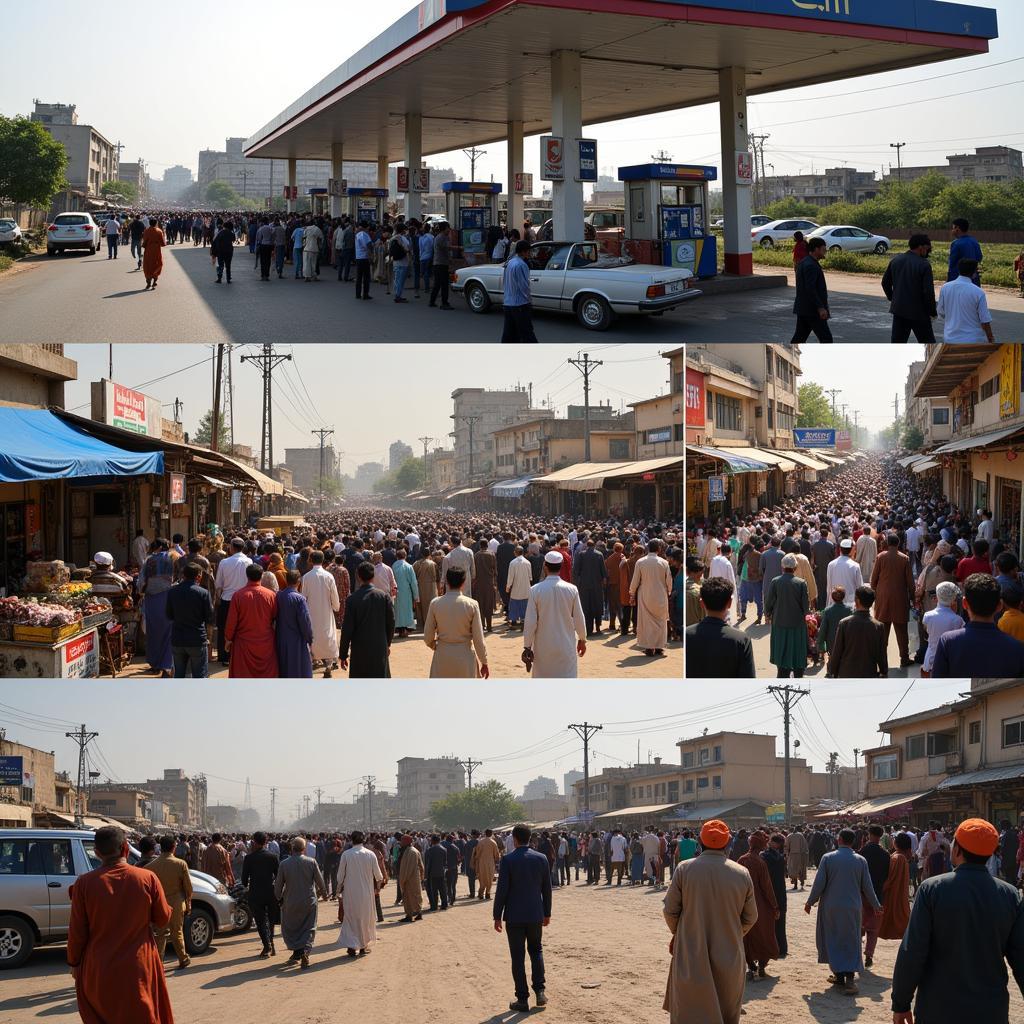Inflation has become a persistent and pressing issue in Pakistan, impacting the lives of millions and posing significant challenges to the country’s economic stability. This essay delves into the multifaceted nature of inflation in Pakistan, examining its underlying causes, far-reaching impacts, and exploring potential solutions to mitigate its adverse effects.
Understanding the Roots of Inflation in Pakistan
Inflation, simply defined as the sustained increase in the general price level of goods and services in an economy over a specific period, is a complex phenomenon influenced by a myriad of factors. In the context of Pakistan, several key drivers have contributed to the current inflationary pressures:
-
Supply-Side Constraints: Disruptions in global supply chains, exacerbated by geopolitical events and the lingering effects of the COVID-19 pandemic, have created bottlenecks and shortages, driving up the prices of essential commodities. Pakistan, being a net importer of various raw materials and finished goods, has been particularly vulnerable to these global supply shocks.
-
Fiscal Imbalances: Chronic fiscal deficits, stemming from inadequate revenue generation and high government expenditures, have fueled inflationary pressures. To finance these deficits, the government often resorts to borrowing from the central bank, injecting excess money into the economy and driving up prices.
-
Monetary Policy: While central banks typically raise interest rates to curb inflation, Pakistan has faced a unique challenge. Increasing interest rates can exacerbate debt servicing costs, further straining government finances and potentially hindering economic growth. Finding the right balance between controlling inflation and supporting economic activity has been a delicate balancing act.
-
Currency Depreciation: The Pakistani Rupee has experienced significant depreciation against major currencies, particularly the US dollar. This depreciation makes imports more expensive, contributing to inflationary pressures on imported goods, which constitute a significant portion of Pakistan’s consumption basket.
 Pakistan Inflation Chart
Pakistan Inflation Chart
The Pervasive Impacts of Inflation
The consequences of unchecked inflation are widespread and can have a debilitating effect on various segments of society:
-
Erosion of Purchasing Power: As prices rise, the purchasing power of consumers is eroded, meaning they can buy fewer goods and services with the same amount of money. This disproportionately affects low-income households who have limited savings and spend a larger proportion of their income on essential goods, often pushing them further into poverty.
-
Declining Investment: Inflation creates uncertainty for businesses, making it difficult to plan for the future and assess the profitability of investments. This can lead to a decline in private investment, hindering economic growth and job creation.
-
Social Unrest: Rising inflation can fuel social unrest and political instability as citizens struggle to cope with the rising cost of living. This can lead to protests, strikes, and demands for government intervention, potentially disrupting economic activity and social cohesion.
Navigating the Path Forward: Potential Solutions
Addressing the challenge of inflation requires a multi-pronged approach, tackling both the demand-side and supply-side factors contributing to rising prices:
-
Fiscal Consolidation: Implementing sound fiscal policies aimed at reducing the fiscal deficit is crucial. This involves broadening the tax base, improving tax collection efficiency, and rationalizing government expenditures.
-
Monetary Policy Reforms: Strengthening the independence and effectiveness of the central bank in implementing monetary policy is essential. While navigating the complexities of interest rate adjustments, focusing on managing the money supply and controlling inflationary expectations is vital.
-
Supply-Side Interventions: Addressing supply-side bottlenecks that contribute to inflation is critical. This includes investing in infrastructure, improving logistics and transportation networks, and promoting domestic production of essential goods to reduce reliance on imports.
-
Social Safety Nets: Strengthening social safety nets to protect the most vulnerable segments of society from the adverse effects of inflation is crucial. This could include targeted subsidies on essential goods, cash transfer programs, and initiatives to enhance food security.
 Pakistan Economic Challenges
Pakistan Economic Challenges
Conclusion
Inflation poses a formidable challenge to Pakistan’s economic stability and societal well-being. Addressing this complex issue requires a comprehensive and coordinated approach, involving fiscal prudence, effective monetary policy, supply-side reforms, and targeted social safety nets. By implementing sound economic policies and fostering sustainable growth, Pakistan can navigate the path toward price stability and create a more prosperous future for its citizens.
FAQs on Inflation in Pakistan
1. What is the current inflation rate in Pakistan?
The inflation rate in Pakistan fluctuates, but it has been significantly elevated in recent times. For the most up-to-date information, it’s advisable to refer to the State Bank of Pakistan’s website or reputable financial news sources.
2. How does inflation impact the average person in Pakistan?
Inflation directly impacts the cost of living. As prices rise, people’s purchasing power decreases, making it harder to afford essentials like food, housing, and transportation. This can lead to financial strain, especially for low-income households.
3. What role does the government play in controlling inflation?
The government plays a crucial role in managing inflation through fiscal and monetary policies. This includes controlling government spending, managing the money supply, and setting interest rates.
4. What can individuals do to cope with inflation?
While individuals have limited control over inflation, they can take steps to mitigate its impact. This includes creating a budget, exploring ways to increase income, and making informed spending choices.
5. Are there any long-term solutions to Pakistan’s inflation problem?
Yes, addressing structural issues in the economy is crucial for long-term solutions. This includes promoting sustainable economic growth, improving productivity, and strengthening institutions.
If you need further assistance understanding the complexities of inflation in Pakistan, please don’t hesitate to contact us. Our team is available 24/7 to provide support and guidance. You can reach us at +923337849799, email us at news.pakit@gmail.com, or visit our office located at Dera Ghazi Khan Rd, Rakhni, Barkhan, Balochistan, Pakistan.
For insights into other economic trends and analyses, you can explore related articles on our website, such as the impact of fluctuating 9mm pistol price in pakistan 2017 on the overall market or the 12 bore gun price in pakistan 2016 and its relation to inflation. We strive to provide comprehensive information to keep you informed about Pakistan’s economic landscape.